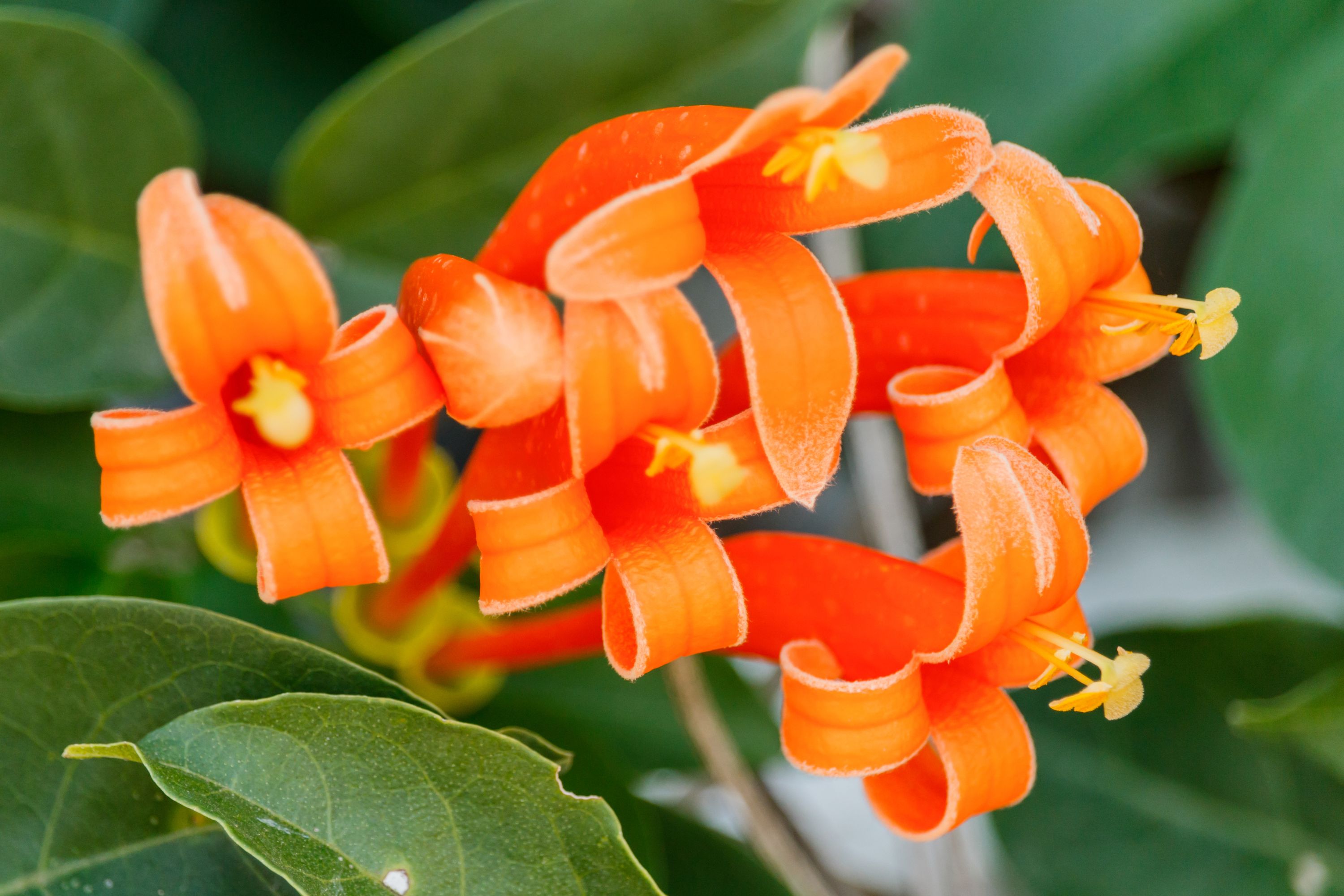Flame vine
(Pyrostegia venusta)

Description
Pyrostegia venusta, commonly known as flame vine or orange trumpet vine, is a species of flowering plant in the Bignoniaceae family. This vine is native to Brazil and can be found growing in the wild in the tropical regions of South America. Pyrostegia venusta is widely cultivated as an ornamental plant due to its stunning orange-red flowers, which bloom in profusion during winter and early spring. In this article, we will explore the characteristics, cultivation, and uses of this beautiful vine in detail. Taxonomy and Nomenclature Pyrostegia venusta was first described by Scottish botanist John Lindley in 1831. The genus name Pyrostegia is derived from the Greek words pyr, meaning fire, and stegos, meaning covered, referring to the flame-like appearance of the flowers. The species epithet venusta comes from the Latin word for beautiful, which is a fitting description for this gorgeous plant. Description Pyrostegia venusta is a fast-growing evergreen vine that can reach up to 30 feet (9 meters) in length. It has thick woody stems that can grow as thick as a man's arm, and it produces tendrils that help it climb and attach to nearby structures. The leaves are glossy green, lance-shaped, and grow up to 4 inches (10 cm) long. The flowers are the real star of the show, however. They are trumpet-shaped, 2-3 inches (5-7.5 cm) long, and arranged in clusters of 15-20 blooms. The flowers are a bright orange-red color and are borne on the ends of the branches in late winter and early spring. The plant produces long, narrow seed pods that contain numerous flat seeds. Cultivation Pyrostegia venusta is a relatively easy plant to cultivate, and it can be grown in a variety of climates as long as it is protected from frost. It prefers a sunny location with well-draining soil that is kept moist but not waterlogged. This vine can be propagated from seeds, cuttings, or layering. Seeds should be planted in a well-draining potting mix and kept moist until they germinate. Cuttings should be taken from the softwood growth in spring or summer, dipped in rooting hormone, and planted in a potting mix. Layering involves bending a stem to the ground and covering it with soil until it forms roots, and then the new plant can be separated from the parent. Pyrostegia venusta should be pruned regularly to control its growth and encourage blooming. Uses Pyrostegia venusta is primarily grown as an ornamental plant, prized for its stunning flowers that bloom in the winter when most other plants are dormant. It is often used to cover walls, fences, or trellises, and it can also be trained to grow as a standard or a small tree. The plant attracts hummingbirds and butterflies with its nectar-rich blooms, making it a popular choice for wildlife gardens. In traditional medicine, Pyrostegia venusta has been used to treat various ailments, including fever, coughs, and digestive problems. However, it is important to note that the plant can be toxic if ingested, and caution should be taken when handling it. In conclusion, Pyrostegia venusta is a beautiful and versatile plant that can add a splash of color to any garden or landscape. With its vibrant orange-red flowers, glossy leaves, and easy cultivation requirements, it is no wonder that this plant is so popular among gardeners and plant enthusiasts. Whether grown as a climbing vine, a standard, or a small tree, Pyrostegia venusta is sure to make a stunning statement in any setting.
Taxonomic tree:







